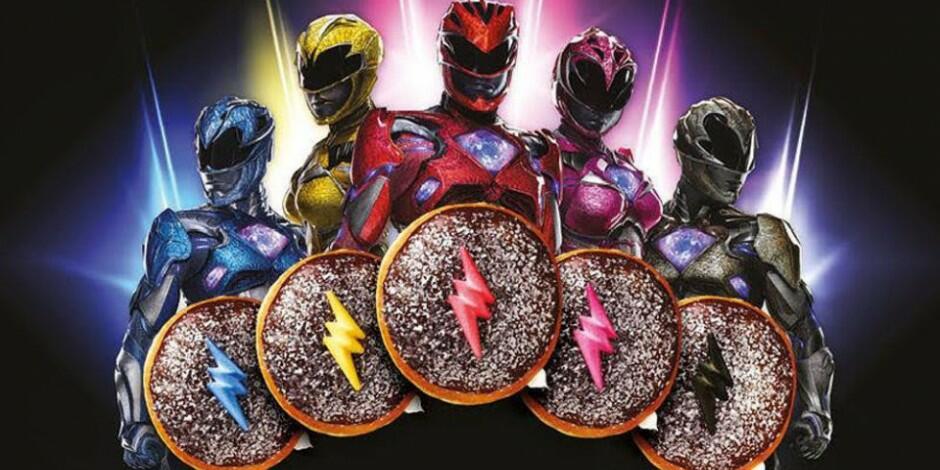
The concept of product placement has evolved with time and in today’s competitive market environment, brands are exploiting every avenue to advertise their products and expand their customer base. According to Srivastava, product placement in movies is an alternative to “advertisements for better brand recall, purchase intentions and changes in perceptions toward the brands as well as improving attitudes toward the brand” (281). Krispy Kreme, an American doughnuts and coffeehouse company utilized this concept of product placement in the movie in 2017.
In this image, power rangers are holding Krispy Kreme doughnuts as a marketing strategy.
This association worked well because some scenes in the movie naturally weave into the Krispy Kreme brand making it part of the filming. For instance, in one scene, rangers are seen training inside one of the company’s local stores. In another instance, Billy, the Blue Ranger says that the Krispy Kreme in their town “Angel Grove, is the location of the magical artifact the Zeo Crystal” (Flynn para. 6). Billy also claims that the villain, Rita Repulsa, uses Krispy Kreme as her secret location.
This weaving of Krispy Kreme into the flow of the movie creates a working association between the brand and the film. The association was so successful that Krispy Kreme decided to open its first digital shop located in the fictitious city of Angel Grove where the film is set. This advertisement strategy worked well because Krispy Kreme’s revenue in 2017 (at 891.5 million USD) was the highest over the last decade – in 2016, it was 758 million USD and in 2018, it dropped to 805 million USD (Lock). Such statistics underscore the power of product placement in films as an alternative way of marketing and creating brand awareness.
Works Cited
Flynn, Kerry. Rampant Krispy Kreme Product Placement is the True Hero of Power Rangers. 2017. Web.
Lock, Steve. Sales of Krispy Kreme in the United States from 2001 to 2018 (in Million U.S. Dollars). 2019. Web.
Srivastava, Rajesh. “Promoting Brands through Product Placement in Successful and Unsuccessful Films in Emerging Markets.” Journal of Promotion Management, vol. 22, no. 3, 2016, pp. 281-300.